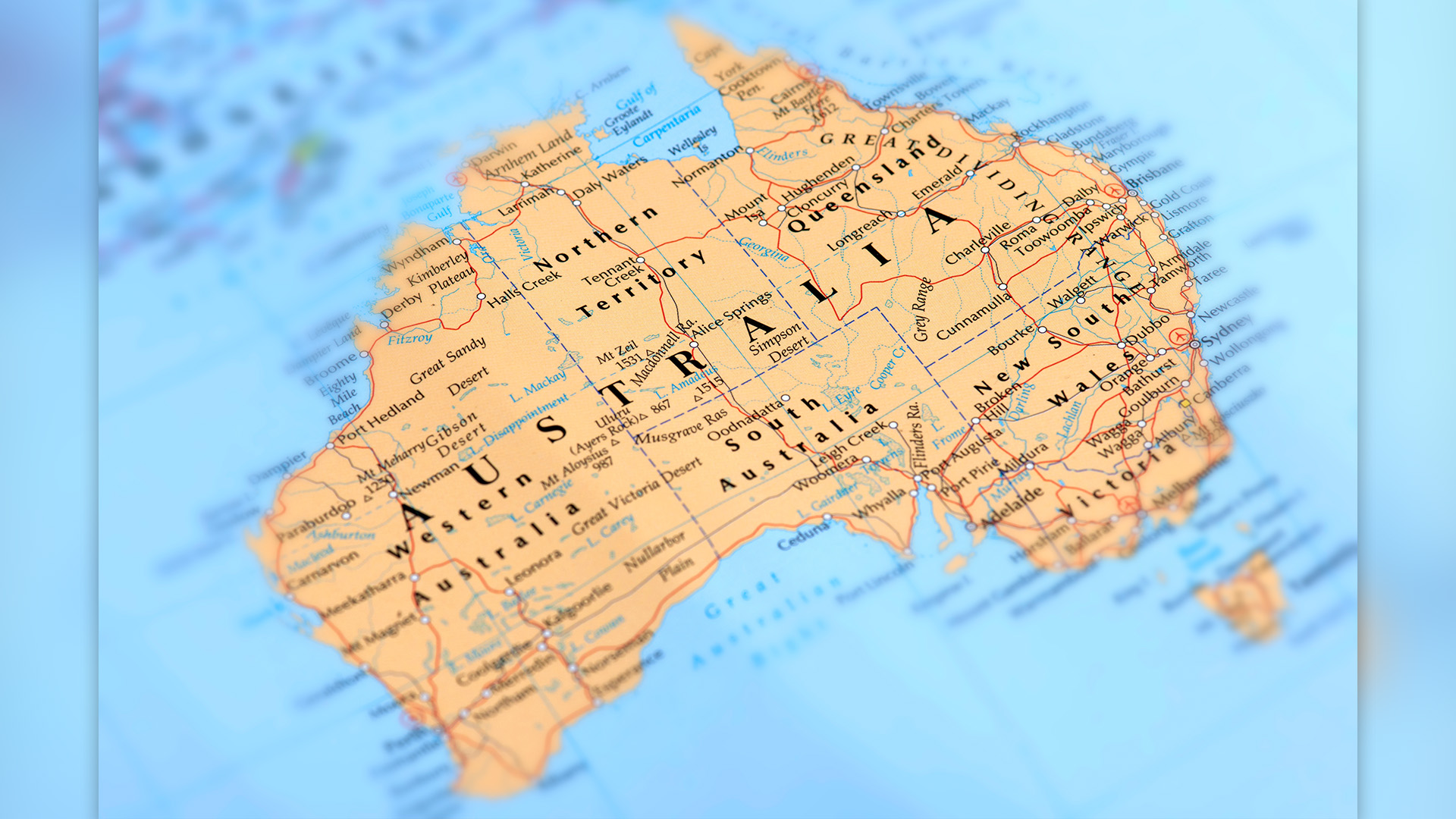
Australia is not only the smallest continent but also Earth's largest island. But the land Down Under wasn't always so isolated; it was once part of a bigger supercontinent. So when did Australia become its own continent?
Australia's continental landmass measures about 2,300 miles (3,700 kilometers) from north to south and 2,485 miles (4,000 km) from east to west. Within its 2.97 million square miles (7.69 million square kilometers), Australia is home to the oldest known material of terrestrial origin on Earth: zircon crystals from the Jack Hills region of western Australia dating to about 4.4 billion years ago, according to a 2014 study in the journal Nature Geoscience.
The oldest parts of Australia are three continent-size chunks of rock known as cratons: the North, South and West Australian cratons, Alan Collins, a geologist at the University of Adelaide in Australia, told Live Science. The younger, eastern part of Australia is made up of rock that formed on the edge of the continent's older regions over the past 500 million years.
Australia was once part of a much larger landmass known as Gondwana, which also included what are now Africa, South America, Antarctica, India and Madagascar. Gondwana was itself once part of the supercontinent Pangaea, from which it broke away about 200 million years ago, according to Monash University.
Gondwana began splintering about 180 million years ago, Collins said. Its eastern half — which included Australia, Antarctica, India and Madagascar — separated from its western half, made up of Africa and South America, according to the Free University of Berlin.
Related: Is Africa splitting into two continents?
Gondwana broke up because oceanic crust subducted, or slid, under the southern and eastern margins of Asia, falling into the deep Earth, Collins explained. This oceanic crust dragged the rest of its tectonic plate with it, and the northern margin of Gondwana was on the other end of this plate, he said.
East Gondwana, in turn, lost more and more parts over time. "Together as a single block, Australia and Antarctica separated from Gondwana about 135 million ago," Patrice Rey, a geologist at the University of Sydney, told Live Science.
This block separated from Gondwana because a tectonic plate east of this block subducted under the block. "This subduction zone accommodated the eastward motion of the Australia-Antarctica block away from Gondwana," Rey said.
New Zealand was once part of this breakaway block, too. However, about 100 million years ago, the landmass that now includes New Zealand — the largely submerged continent dubbed Zealandia — split from what is now eastern Australia in part due to major volcanic activity.
Australia ultimately separated from Antarctica to become its own continent about 35 million years ago, when the former drifted northward away from the latter, Rey said. This event created the Southern Ocean that currently surrounds Antarctica, Collins said.
Australia is still on the move. Drifting at about 2.75 inches (7 centimeters) per year, Australia is the planet's fastest-moving tectonic plate, Australian scientists Chris Rizos and Donald Grant wrote in a 2017 piece in The Conversation.
"Australia is moving quite fast north — as fast as your fingernails grow," Collins said.
In about 20 million to 30 million years, Australia "is likely to sideswipe East Asia," Collins added. Once Australia collides with Asia, its time as its own continent will come to an end.







